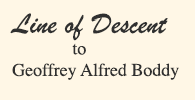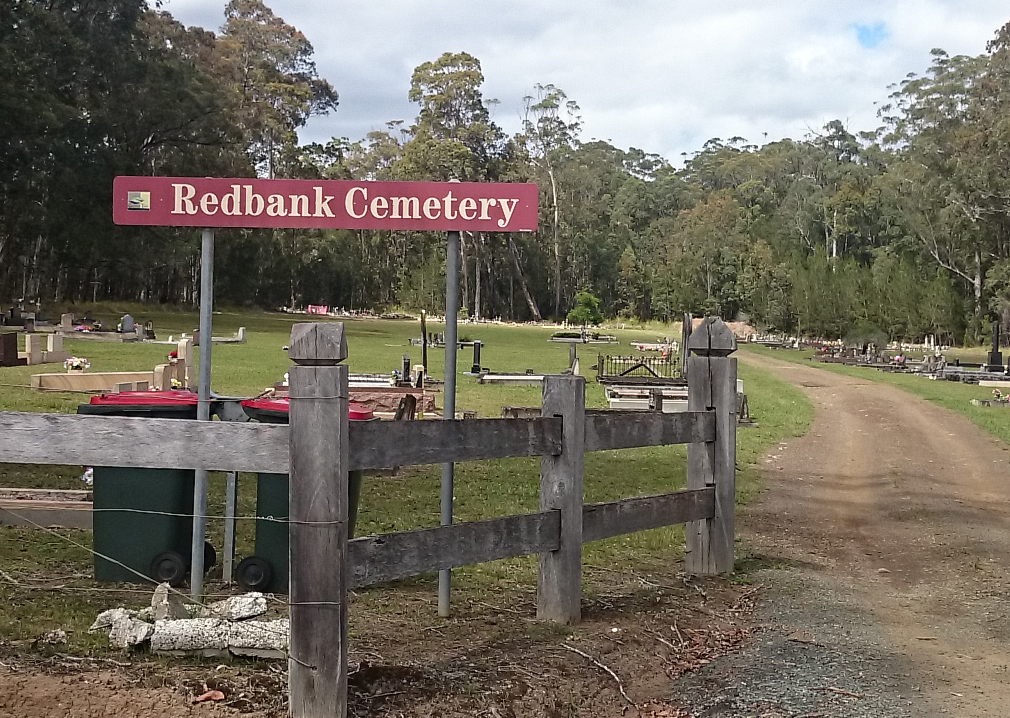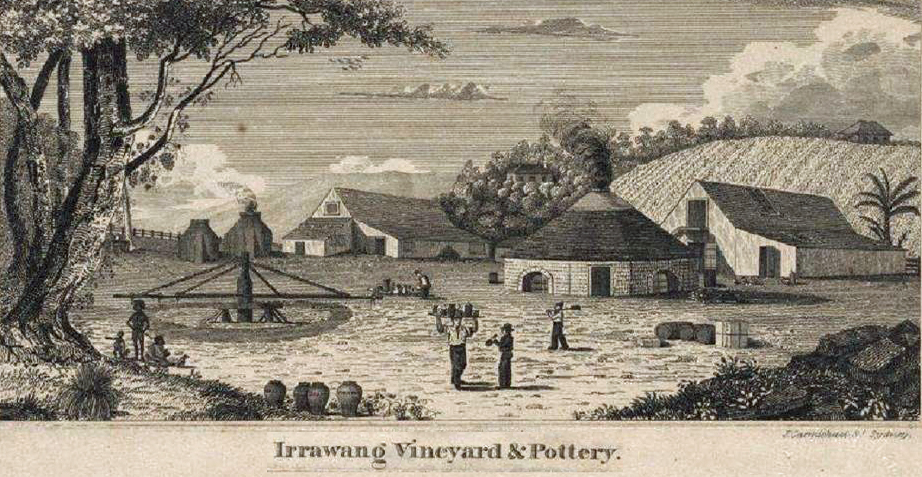
James Gordon (1790-1868)
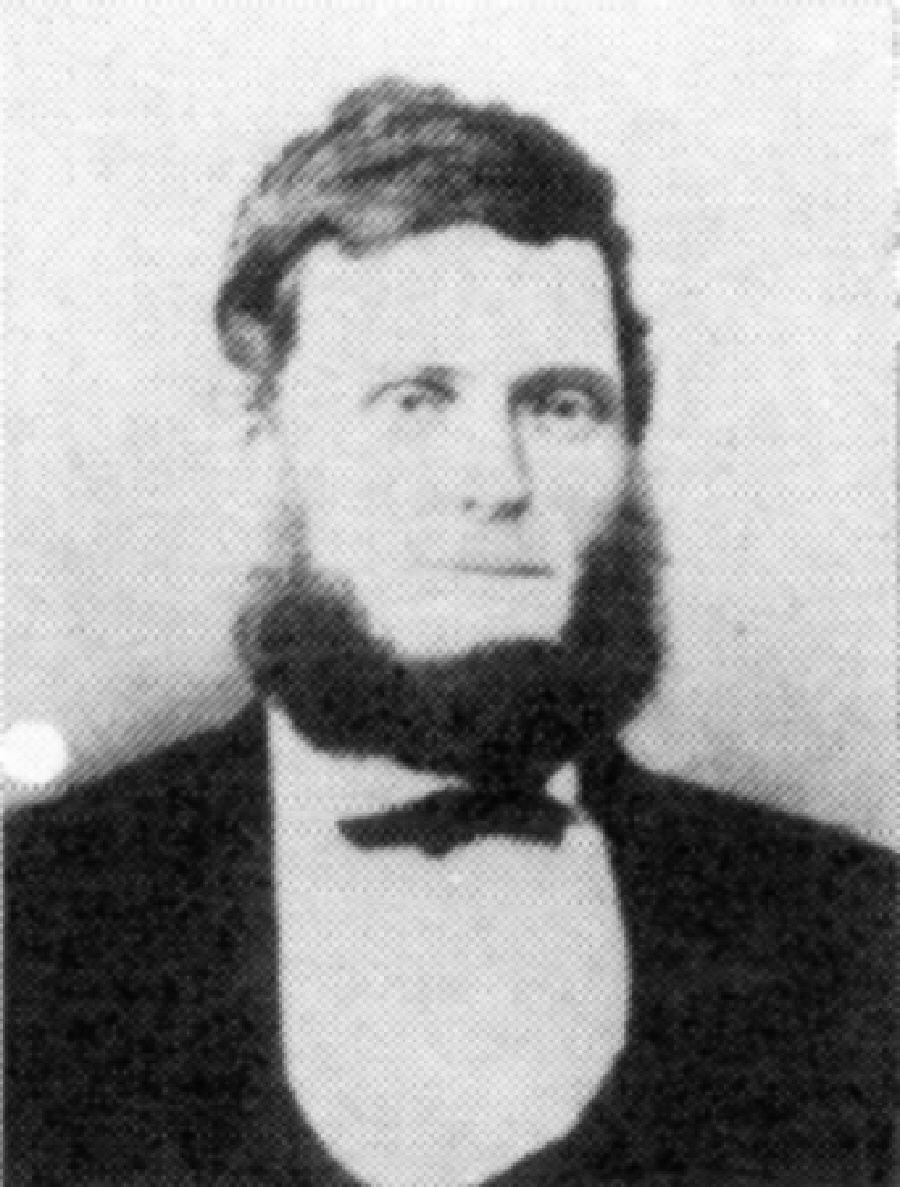
- Birth:
- 20 March, 1790, Maynooth, Kilmore, Armagh, Ireland
- Father:
- Robert Gordon
- Mother:
- Grace Ward
- Marriage:
- 1: to Jane Wright c1819, Ireland
- Children:
- Sarah Ann (1820-1861)
- Harriet (1820- )
- Maria (1823-1917)
- Susan (1827-1870)
- Isaac (1828 - )
- Marriage:
- 2: to Lavinia Harvey, 1837, Ireland
- Children:
- Henry (1838-1903)
- Frances (1840 - )
- Joseph/Alfred (1842-1925)
- Emily (1843-1922)
- James (1844-1908)
- Charles (1846-1912)
- Matilda (1848-1932)
- Death:
- 28 February, 1868, Oyster Bank, nr Taree, NSW, NSW
Our Irish
and British ancestors who came as assisted/sponsored immigrants to
Australia, while generally prepared to work diligently in their new
land, were also obviously prepared to fudge the figures just a little.
It probably wasn't vanity which caused both James Gordon and his wife
Lavinia to mis-state their ages on their immigration documents in 1838,
but rather, the preference by the authorities for workers under the age
of 50. And in James case, had he told his actual age to the clerk, it
would have been perilously close to the cut off point, so, to be on the
safe side, he simply took 12 years off, and said both he and his wife
were 36 - although Lavinia was considerably younger! (Some of the
immigration records give other versions of Jane's age. but all stipulate
that James was either 35 or 36, instead of his more probable 48).
James and
Lavinia had married not long before they took up the challenge to
immigrate. John already had at least five children, to his first wife,
Jane Wright, whom he married nearly 20 years earlier in northern
Ireland. Jane had died at Crossmaglen, in county Armagh, leaving James a
widower to care for the children. After nine years as a widower, James
married Lavinia Harvey, and within just a few months of that marriage,
they set sail for Australia, along with James' five children, who ranged
in age from 18 year old twins, down to a nine year old boy.
The voyage
from Belfast to Sydney apparently was achieved without too much drama -
except for Lavinia, who was one of ten women who gave birth while at
sea.
The
immigration documents describe James variously as a sawyer or a farmer,
and Lavinia as a spinner, skills which would be useful in the expanding
colony.
Their first
employer was James King, who had a vineyard and a pottery at Raymond
Terrace, north of Newcastle. James King was an entrepreneur and a
pioneer in the colony's early wine industry. King paid the James and
Lavinia £50
a year, plus rations, for their work. The products from his pottery, as
well as supplying communities from the Hunter River area and south to
Sydney, were also used in the winery.
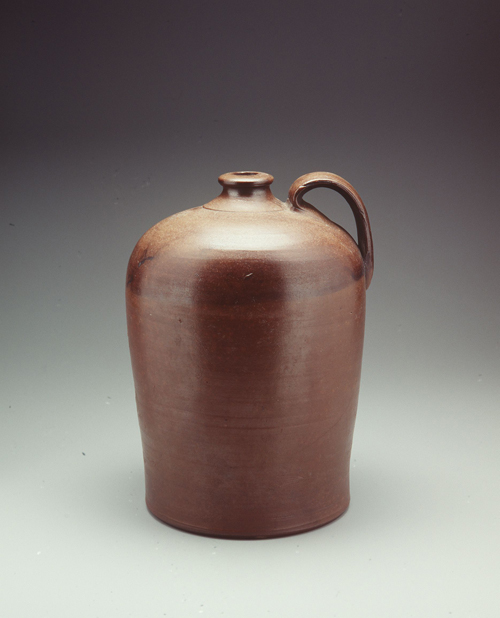
A jar from the Irrawang pottery
King's
property, under the name "Irrawang" (see the engraving showing the
community at the top of this page), was also described on local maps as
a "private township"(see below) . How long the Gordons remained there
isn't known, but when more children born to the couple were baptised,
the family's residence was recorded as Nelson Plains, a farming area
just the other side of the Williams River from Irrawang.
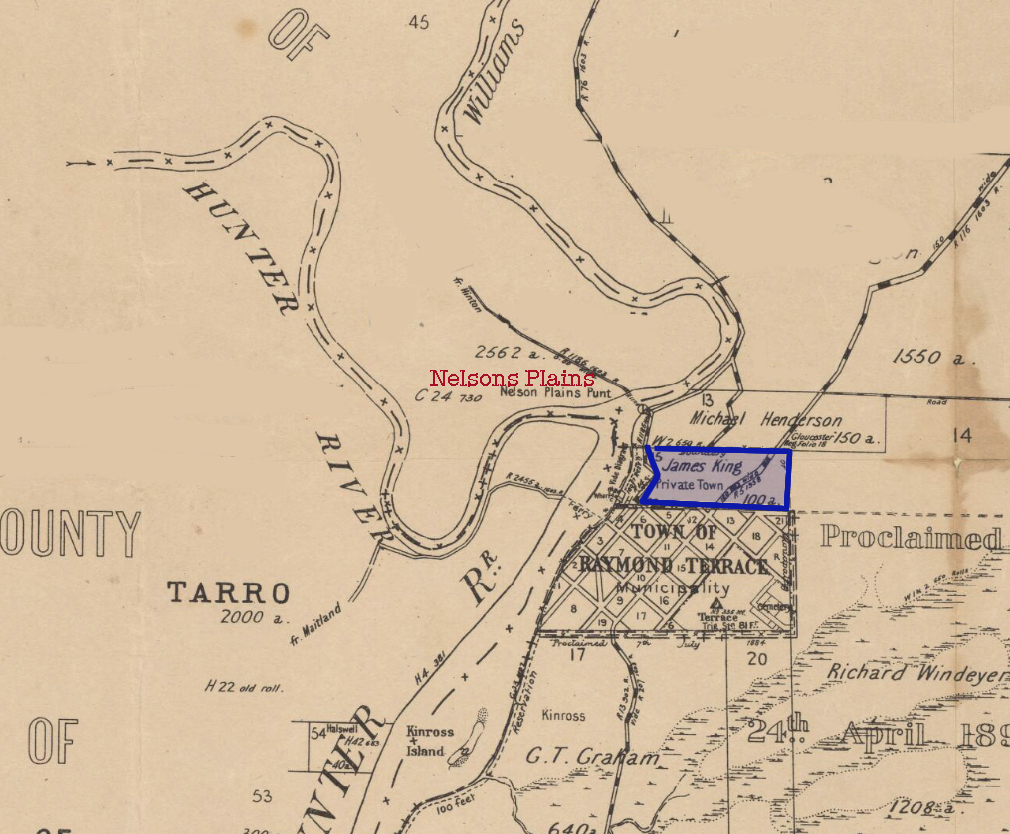
James and
Lavinia had seven children in their first 10 years in the colony, but
Jane died just a few weeks after the birth of their youngest, in 1848.
Her death caused James to reassess the family's future, and shortly
afterwards, he and he younger children set out for the settlement at Old
Bar, 150 kilometres north, near Taree, on the Manning River.
Here
he leased land off Lewis Gordon, (no relation), which James farmed
till his death.
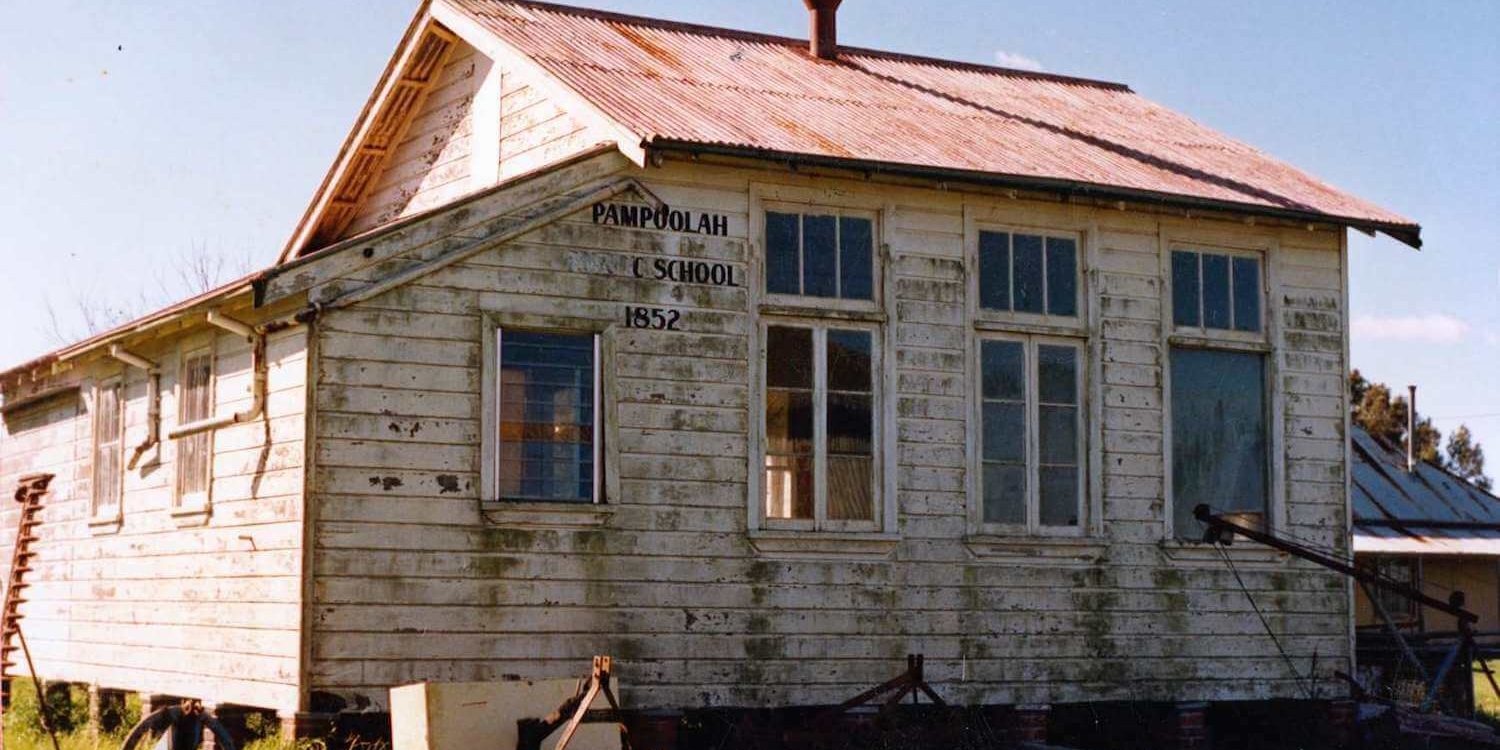 James
was active in the local community. In 1852, he is listed as one of
those people agitating for the government to take over the
Presbyterian School at Redbank that his younger children attended, to
become a government school.
James
was active in the local community. In 1852, he is listed as one of
those people agitating for the government to take over the
Presbyterian School at Redbank that his younger children attended, to
become a government school. The Pampoolah School (originally Redbank) in a paddock at the end of Redbank Road, whereas it was originally on the other side of the road when James’s younger children and many of his grandchildren went to school there.
left: one of
the original school buildings.
James died at Oyster
Bank on 28th February 1868 from retention of urine caused by old age
after an illness lasting 13 days. According to his death certificate, he
was 77 years old. He was buried in the north east corner of Redbank
cemetery. During his years at Oyster Bank, his youngest daughter Matilda
had lived with him, and in his will he made special provision for her,
after detailing that the property itself was to go to his youngest son,
Charles:
To
my dear daughter Matilda Lavinia Gordon I bequeath the sum of Fifty
pounds sterling to be paid to her.... within two years after my decease,
also the whole of the poultry, and further the said Matilda Lavinia
Gordon so long as she shall remain unmarried is to have full liberty to
reside in my dwelling house at Oyster Bank.
(One
of the many reseachers of the Gordon family in Australia was Geoff
Gordon, whose extensive work I have drawn on here. For the full
manuscript of Geoff's work, click
here)
